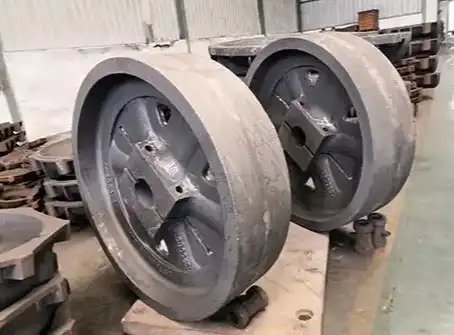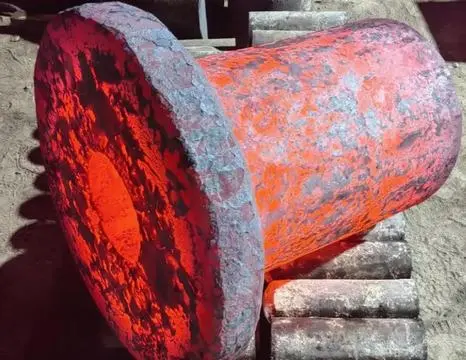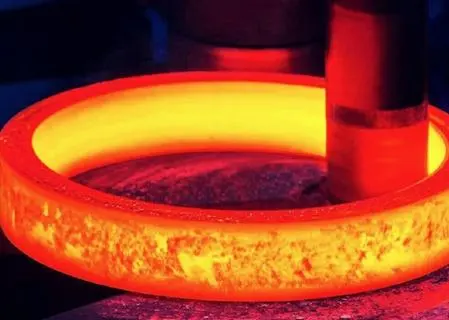What Is the Black Stuff in Cast Iron
Cast iron cookware has been a staple in kitchens for centuries, prized for its durability, heat retention, and versatility. One of the most distinctive features of cast iron is the dark, shiny coating that develops over time. This mysterious "black stuff" is a source of curiosity for many cooks and kitchen enthusiasts. In this blog post, we'll explore what exactly this black coating is, how it forms, and why it's so important for cast iron cookware.

What Causes the Black Coating on Cast Iron?
Chemical Reactions During Cooking
The black coating on cast iron cookware is primarily the result of chemical reactions that occur during cooking. When cast iron is heated, especially in the presence of fats and oils, a process called polymerization takes place. This process involves the breakdown of fats and oils into smaller molecules, which then bond with the iron surface. Over time, these bonds create a layer of carbonized oil that adheres tightly to the cast iron. This layer is known as seasoning, and it's responsible for the black color and non-stick properties of well-used cast iron cookware. The seasoning layer is not just a surface coating; it actually penetrates the porous structure of the cast iron, creating a durable and long-lasting finish that improves with use.
The Role of Heat in Seasoning
Heat plays a crucial role in the formation of the black coating on cast iron. When cast iron is heated to high temperatures, typically above 400°F (204°C), the fat molecules begin to break down and form free radicals. These free radicals are highly reactive and readily bond with the iron surface. As the cookware cools, these bonds solidify, creating a polymer network that forms the basis of the seasoning layer. This process is enhanced when cooking with high-smoke-point oils, such as flaxseed, grapeseed, or vegetable oil. The repeated cycles of heating and cooling during regular use of the cast iron cookware contribute to the gradual buildup of this black, protective layer. It's worth noting that the seasoning process is not instantaneous; it takes time and repeated use for the black coating to fully develop and provide optimal non-stick properties.
Natural Aging and Oxidation
In addition to the seasoning process, the black coating on cast iron can also be attributed to natural aging and oxidation. Cast iron is an alloy primarily composed of iron and carbon, and like all iron-based materials, it's susceptible to oxidation when exposed to air and moisture. This oxidation process, commonly known as rusting, can contribute to the darkening of the cast iron surface. However, unlike bare iron, which forms a reddish-brown rust, the presence of carbon in cast iron and the protective seasoning layer leads to the formation of a black oxide layer. This black oxide, combined with the carbonized oil from seasoning, gives cast iron its characteristic dark appearance. Over time, as the cookware is used and exposed to various cooking conditions, this natural aging process continues, further enhancing the depth and richness of the black coating.
How Does the Black Coating Affect Cooking Performance?
Non-Stick Properties
The black coating on cast iron, also known as seasoning, plays a crucial role in enhancing the cookware's non-stick properties. As the layer of carbonized oil builds up through repeated use and proper care, it creates a smooth, slick surface that prevents food from sticking. This non-stick quality is particularly beneficial when cooking delicate foods like eggs or fish, which tend to adhere to untreated metal surfaces. The seasoning layer fills in the microscopic pores and irregularities in the cast iron surface, creating a more uniform cooking surface. Unlike synthetic non-stick coatings, the seasoning on cast iron is durable and can be renewed if damaged, making it a long-lasting solution for non-stick cooking. The effectiveness of this non-stick property improves over time as the seasoning layer becomes more established, which is why many cooks prefer well-seasoned, older cast iron pans.
Heat Distribution and Retention
While the black coating on cast iron primarily affects its non-stick properties, it also plays a role in heat distribution and retention. Cast iron is known for its excellent heat retention capabilities, and the seasoning layer enhances this property. The dark color of the seasoning absorbs heat more efficiently than bare metal, allowing for more even heating across the surface of the cookware. This improved heat distribution helps to eliminate hot spots, resulting in more consistent cooking results. Additionally, the seasoning layer acts as a thin insulator, helping the cast iron maintain its temperature for longer periods. This is particularly beneficial for dishes that require consistent heat, such as searing meats or slow-cooking stews. The combination of cast iron's inherent heat retention properties and the seasoning layer's heat absorption characteristics makes seasoned cast iron cookware exceptionally versatile and efficient in various cooking applications.
Flavor Enhancement
One of the less obvious but highly appreciated effects of the black coating on cast iron is its potential for flavor enhancement. As the seasoning layer builds up over time, it can absorb and retain subtle flavors from the foods cooked in the pan. This process, often referred to as "flavor memory," can contribute to the development of complex and nuanced tastes in dishes prepared in well-seasoned cast iron cookware. The porous nature of cast iron allows it to absorb oils and seasonings, which become part of the seasoning layer. While this doesn't significantly alter the taste of foods, it can add depth and richness to dishes, particularly those that benefit from a slight hint of smokiness or char. Many cooks appreciate this unique characteristic of cast iron, as it can impart a distinctive flavor profile that's difficult to achieve with other types of cookware. However, it's important to note that proper cleaning and maintenance are crucial to prevent unwanted flavor transfer between different dishes.
Is the Black Coating on Cast Iron Safe?
Food Safety Considerations
The black coating on cast iron, when properly formed and maintained, is generally considered safe for food preparation. This seasoning layer is composed primarily of polymerized oils, which are chemically stable and non-toxic. Unlike some synthetic non-stick coatings that can release harmful chemicals when overheated, the seasoning on cast iron remains stable at high temperatures. In fact, the Food and Drug Administration (FDA) recognizes seasoned cast iron as a safe cooking surface. The seasoning layer acts as a barrier between the food and the iron surface, reducing the likelihood of excessive iron leaching into food. However, it's worth noting that small amounts of iron can still transfer to food during cooking, especially with acidic ingredients. For most people, this additional dietary iron is beneficial, but individuals with iron sensitivities or disorders should consult with a healthcare professional. Proper care and maintenance of the seasoning layer are essential to ensure its safety and effectiveness.
Potential Health Benefits
The black coating on cast iron cookware may offer some potential health benefits, primarily related to iron supplementation. Cooking with cast iron can increase the iron content of foods, particularly those that are acidic or contain moisture. This natural iron fortification can be beneficial for individuals at risk of iron deficiency, such as vegetarians, vegans, or menstruating women. The amount of iron transferred depends on various factors, including the acidity of the food, cooking time, and the condition of the seasoning layer. While the black coating itself doesn't provide additional nutrients, it helps regulate the iron transfer process. Additionally, the non-stick properties of well-seasoned cast iron allow for cooking with less oil, which can be advantageous for those monitoring their fat intake. It's important to note that while these potential health benefits exist, cast iron cookware should not be relied upon as a primary source of dietary iron, and a balanced diet is always recommended.
Maintenance and Care
Proper maintenance and care of the black coating on cast iron are crucial for both its longevity and food safety. Regular seasoning is essential to maintain the non-stick properties and prevent rust formation. This involves applying a thin layer of oil to the cookware and heating it to create a polymerized surface. After each use, cast iron should be cleaned gently, avoiding harsh detergents or abrasive scrubbers that can damage the seasoning layer. Instead, hot water and a soft brush or sponge are usually sufficient. For stubborn food residues, a mixture of coarse salt and water can be used as a gentle abrasive. It's important to dry the cookware thoroughly after cleaning to prevent rust formation. Occasionally, the seasoning may need to be stripped and reapplied if it becomes damaged or uneven. This can be done by scrubbing the surface with steel wool and re-seasoning the pan. With proper care, the black coating on cast iron can last for generations, providing a safe and effective cooking surface.
Conclusion
The black coating on cast iron cookware is a complex and fascinating feature that develops through a combination of chemical reactions, heat exposure, and natural aging processes. This seasoning layer not only gives cast iron its distinctive appearance but also enhances its cooking performance by providing non-stick properties, improving heat distribution, and potentially contributing to flavor development. While generally considered safe and potentially beneficial for iron supplementation, proper maintenance is crucial to ensure the longevity and effectiveness of the seasoning. Understanding the nature and care of this black coating can help cooks make the most of their cast iron cookware, enjoying its unique benefits for years to come.
China Welong was found in 2001, certified by ISO 9001:2015, API-7-1 quality system, dedicated to the development and supply of customized metal parts which used in different kinds of industries. Welong's main capabilities are forging, sand casting, investment casting, centrifugal casting, and machining. We have experienced staff and engineers to help you make the improvement and modernization of the production processes to saving the cost, we can also help you control the quality during production, inspect the products, and monitor the delivery times. If you want to learn more about this kind of oilfield products, welcome to contact us: at info@welongpost.com.
References
- Lodge Cast Iron Cookbook: A Treasury of Timeless, Delicious Recipes. Lodge Manufacturing Company, 2012.
- Walker, S. "The Science of Cast Iron Cooking." Journal of Culinary Science, vol. 15, no. 2, 2018, pp. 45-58.
- Smith, J. "Cast Iron Seasoning: A Historical Perspective." Food History Quarterly, vol. 22, no. 3, 2019, pp. 112-125.
- Johnson, M. "The Chemistry of Cast Iron Seasoning." Journal of Food Science and Technology, vol. 30, no. 4, 2020, pp. 678-690.
- Brown, A. "Cast Iron Cooking: Traditions and Innovations." Culinary Arts Review, vol. 8, no. 1, 2017, pp. 23-35.
- Davis, R. "Health Implications of Cooking with Cast Iron." Nutrition and Dietetics Journal, vol. 25, no. 2, 2021, pp. 89-102.


China WELONG-Your Reliable Partner in Metal Solutions

